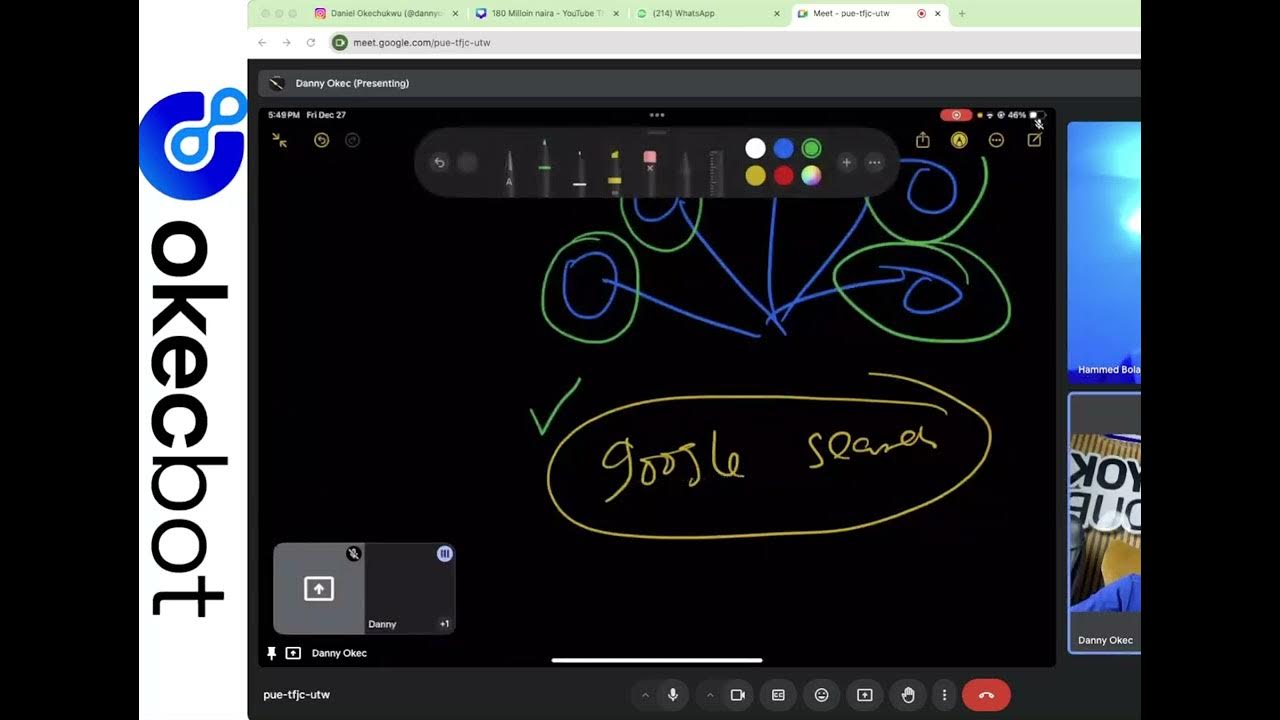How Governments Spy On Protestors—And How To Avoid It | Incognito Mode | WIRED
Summary
Please replace the link and try again.
Takeaways
- 😀 Drones are increasingly used for surveillance during protests, flying at high altitudes, making them difficult to detect, yet they are equipped with powerful cameras and sensors.
- 😀 Gait recognition technology can identify individuals based on their walking patterns, making it a privacy concern for protests where faces might be obscured.
- 😀 Emotional detection technology, such as AI analyzing biometric data, can assess people's emotional states to predict their likelihood of becoming violent or causing disturbances.
- 😀 These surveillance technologies can potentially infringe on privacy by misinterpreting emotions and actions, raising concerns about their reliability and bias.
- 😀 Some countries, like China, have been using gait recognition and emotional detection tech in public spaces for years, showing the global nature of these surveillance trends.
- 😀 The effectiveness of emotional detection technology is questioned, with experts calling for its banning due to its immature and unreliable nature.
- 😀 At protests, protecting personal privacy is crucial: leaving phones at home or using Faraday bags can prevent unauthorized access to data.
- 😀 Turning off biometrics (like facial recognition and fingerprint scanners) on devices adds another layer of protection against forced access to personal information.
- 😀 Social media posts during protests should be approached with caution, assuming that law enforcement may view them. Privacy settings and face obscuration should be considered.
- 😀 Wearing a mask during protests can help protect your identity from being captured in photos or videos that could be used for surveillance purposes.
- 😀 Being aware of your personal risks—such as immigration status or being part of a minority group—helps you assess whether attending a protest could expose you to additional dangers.
Q & A
What is the significance of drones being used in protests?
-Drones provide a way for authorities to surveil protests from high altitudes, making it difficult for protesters to notice or escape the surveillance. They are also equipped with advanced cameras and radar, allowing for detailed monitoring, including the use of cell phone geolocation tools.
Why is the use of drones in surveillance considered concerning?
-Drones are concerning because they make surveillance cheaper, lighter, and more efficient. They also enable authorities to monitor protests in ways that might be harder for the public to detect, increasing the risk of widespread surveillance without proper accountability.
How does gait recognition technology work?
-Gait recognition technology analyzes a person's unique walking patterns, using cameras, motion sensors, or radar. It processes movements into contours, silhouettes, and other features to identify individuals, even when faces are obscured. The technology is effective, but it can be influenced by factors like injuries or terrain.
Has gait recognition been used widely in the U.S.?
-There have been no widespread reports of gait recognition being used by law enforcement in the U.S., but it has been deployed in other countries, such as China, where it has been in use since at least 2018.
What are the ethical concerns regarding emotional detection technology?
-Emotional detection technology, which analyzes biometric data to infer a person's emotional state and predict potential violent behavior, raises concerns about accuracy and bias. It might misinterpret emotions, leading to false conclusions about intent, and may be used to unfairly target specific individuals or groups.
How is emotional detection technology being tested and used?
-Emotional detection technology is being tested in places like the UK, where Amazon-powered cameras have been used in train stations to analyze passengers' emotions, age, and gender. It has also been used in China on Uyghurs, as reported by the BBC.
What advice is given for protecting personal data at protests?
-The advice includes leaving your phone at home if possible, using a Faraday bag to block data access, turning off biometric features like facial recognition or fingerprint scanners, using encrypted messaging services like Signal, and being cautious about social media posts and sharing personal information.
Why is it important to understand personal risks before attending a protest?
-Understanding personal risks, such as immigration status or being part of a minority group, is essential because these factors can make individuals more vulnerable to targeted surveillance or law enforcement actions. It's important to assess the potential consequences of being identified or tracked during a protest.
What are the broader concerns regarding the use of surveillance technology in protests?
-The broader concerns involve the balance between security and privacy. The increasing deployment of AI and surveillance technologies raises questions about civil liberties, the potential for misuse, and the lack of oversight in how these technologies are used, especially when they are not fully debugged or unbiased.
What role does AI play in the development of surveillance technologies?
-AI is central to the development of many surveillance technologies, including facial recognition, gait recognition, and emotional detection. These technologies rely on machine learning and biometric data to identify individuals and predict their behavior, which poses risks in terms of accuracy and privacy violations.
Outlines

This section is available to paid users only. Please upgrade to access this part.
Upgrade NowMindmap

This section is available to paid users only. Please upgrade to access this part.
Upgrade NowKeywords

This section is available to paid users only. Please upgrade to access this part.
Upgrade NowHighlights

This section is available to paid users only. Please upgrade to access this part.
Upgrade NowTranscripts

This section is available to paid users only. Please upgrade to access this part.
Upgrade NowBrowse More Related Video

YouTube Automation with AI Like @CreatorRKguru @truewords1995 | Make FACELESS YouTube Videos with AI

Building a Fraud Profile with Device ID+ (Part 1: Set Up & Demo)

Okecbot ???

Google Incognito पर पोर्न देखने वाले ये जानकार दोबारा ऐसा नहीं करेंगे |ABPLIVE

Targeting Android 15 - Why Your App Is NOT Ready

How to Browse the Internet Anonymously

Beyerdynamic MMX 200 wireless gaming headset review
5.0 / 5 (0 votes)